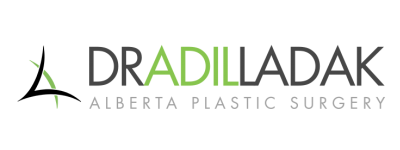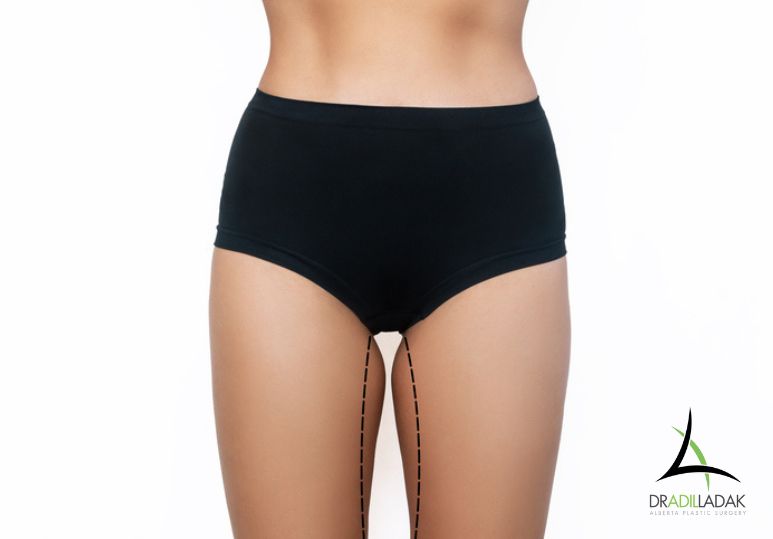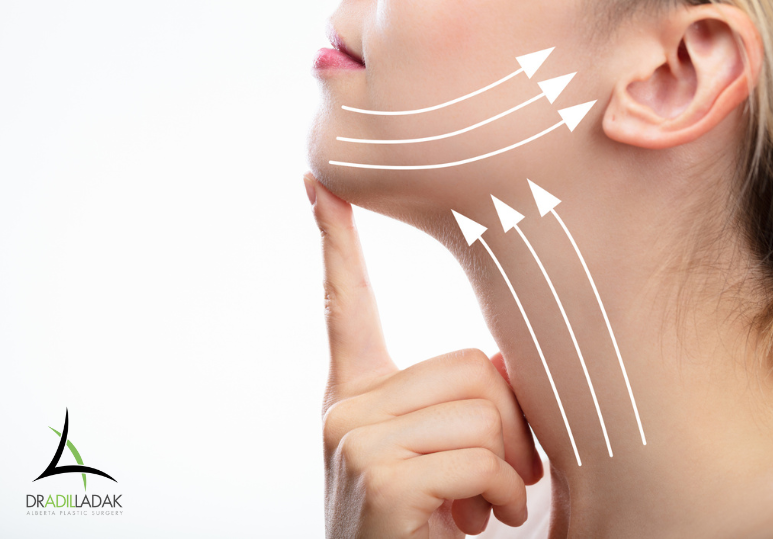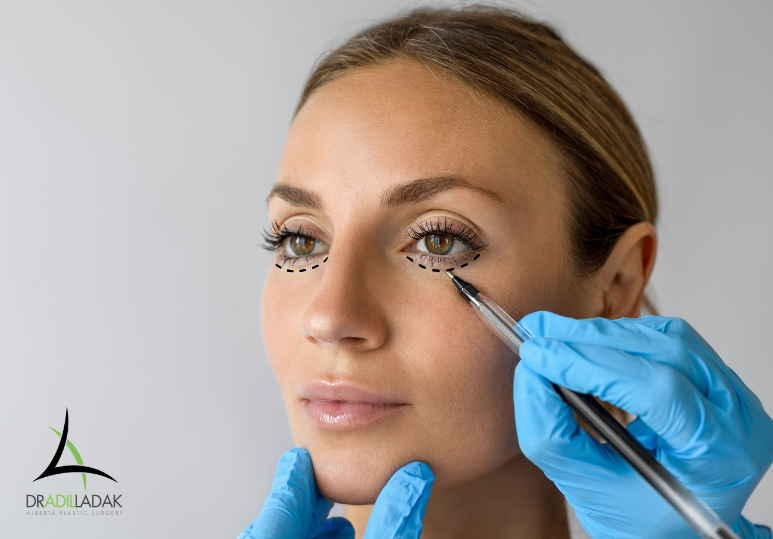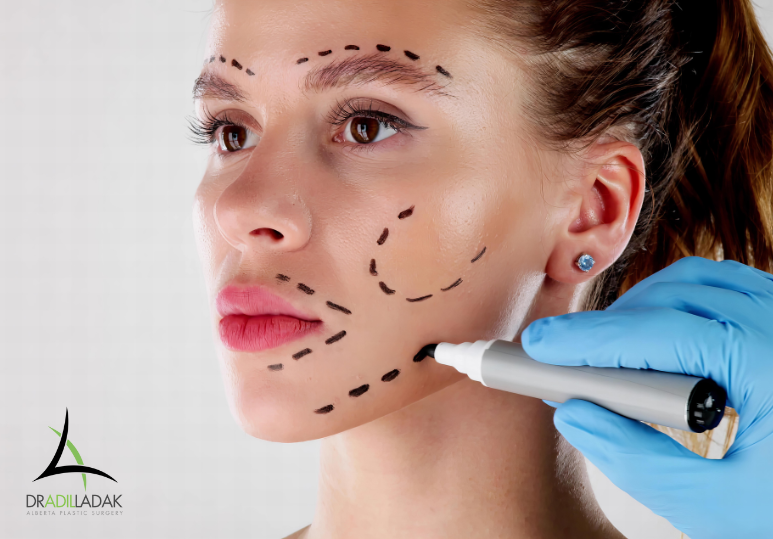Thigh lift surgery, or thighplasty, is a skin tightening and body contouring procedure that addresses the inner portion of the thighs. Excess skin and fat deposits are removed and tissues are tightened and repositioned.
If you are considering a medial thigh lift to contour and restore more natural proportions to your legs, here is everything you need to know about the outcomes and recovery after a medial thigh lift.
THE PROCEDURE
A medial thigh lift is typically an outpatient procedure, completed under general anaesthetic. It will involve an incision, removal of fat and tissue (may include liposuction), and closure of the incision with sutures. Through a pre-surgical consultation, your surgeon will determine the type of incision required and the extent of tightening, removal, and repositioning that will be possible.
THE RECOVERY
Every patient’s journey to recovery will be different. Your recovery time can be dependent on:
- Type of surgical incision: There are four types of medial thigh lift incisions-- lateral, crescent, longitudinal, T-thigh-- some of these are larger and more invasive and may require longer recovery times.
- Amount of fat and tissue removed: Generally speaking, the more fat and tissue removed, the longer the expected recovery time.
- Combined surgeries: some patients will opt to undergo other body contouring surgeries in combination with a thigh lift to overlap healing times. These might include tummy tuck, butt lift, or breast surgery. Although healing will occur at the same time, general recovery time could be longer.
Day One:
You may experience some pain and discomfort. There will be bruising and swelling. You may feel some of the common side effects of general anaesthetic: nausea, vomiting, dizziness, chills, and headache. Ensure you have someone to take you home and help care for you for at least a few days following surgery.
First Two Weeks:
There will be pain in your thigh area, and bruising and swelling will remain. You can manage pain with medications recommended by your doctor. You will likely have a drain in your incision site to help manage fluids and swelling. Your surgeon will ask you to wear a compression garment to protect your incisions and support your tissues as they heal. It is important to be very cautious when moving. Your incisions will be susceptible to pulling and tearing when you stand, sit, bend, and walk. Having someone to assist you around the house will be very helpful at this time.
Getting Active Again:
After some initial rest and healing, it will be important to start moving again to decrease the risk of blood clots, post-surgery. Walking, light stretching, and calf exercises will aid in your recovery. Compression stockings will support you during this time and also help prevent blood clots.
General Recommendations:
- Always follow your surgeon’s advice. Ensure that you attend each required follow-up appointment. Report any increased swelling and pain or itchiness and irritation at the incision site.
- Wear your compression garment. This may be necessary for 3-4 weeks after surgery.
- Follow a low sodium diet to decrease swelling and a fibre rich diet to prevent straining during bowel movements.
- Practice careful wound care according to your surgeon’s instructions. This will minimize the risk of infection and scarring and optimize healing.
The Results:
You will see immediate results post-surgery reflecting the tissue and fat that has been removed. But the final results will be more apparent 3-6 weeks after your medial thigh lift. You can expect to see thighs that are firmer, slimmer, and more naturally contoured. Excess skin and fat will be gone, your incision should be healing well, and you will be able to resume most of your regular activities.
Body Contouring: Medial Thigh Lift
Medial thigh lift is a great option for those considering a body contouring procedure to get rid of excess skin and fat in the thigh area. After an initial recovery period, patients are able to resume most regular activities feeling free of the irritation of sagging skin and droopy thighs. When you have invested the time and effort into losing weight and adopting a healthy lifestyle, a medial thigh lift can help you ensure that your body reflects the hard work you have put in.
Dr. Adil Ladak is a top-performing plastic surgeon in Edmonton, Alberta with a roster of satisfied thigh lift and other body contouring patients. If you are seeking firm, slender thighs after a substantial weight loss, contact the team at Alberta Plastic Surgery Centre in Edmonton to book your consultation. Call us at (780) 407-6691 or fill out the form below.
FAQ's
Q: Which thigh lift incision is best for me?
A: There are many factors that will determine the best type of incision for you. Book a consultation with Dr. Ladak and share your goals for medial thigh lift surgery. Dr. Ladak will make recommendations for the best incision type after your initial assessment.
Q: How can I prepare for my medial thigh lift?
A: Here are some things you can do pre-surgery to ensure optimal results:
- Do not smoke or drink for a few weeks prior to your lift
- Alert your surgeon about all the medications and vitamins you regularly take and follow their advice for discontinuing pre-surgery
- Eat well, hydrate, and rest to prepare yourself for your procedure
- Arrange for family or friends to drive you home and help you out for the first few days or week post-surgery
- Take at least a week or two off work, or longer if your job is active and strenuous.
Q: How long is recovery after a medial thigh lift?
A: Complete recovery could take 3-6 weeks, but you will be able to resume careful movement a few days after surgery, begin walking and light exercise about a week after surgery, and resume full activity about four weeks after if cleared by your surgeon.
